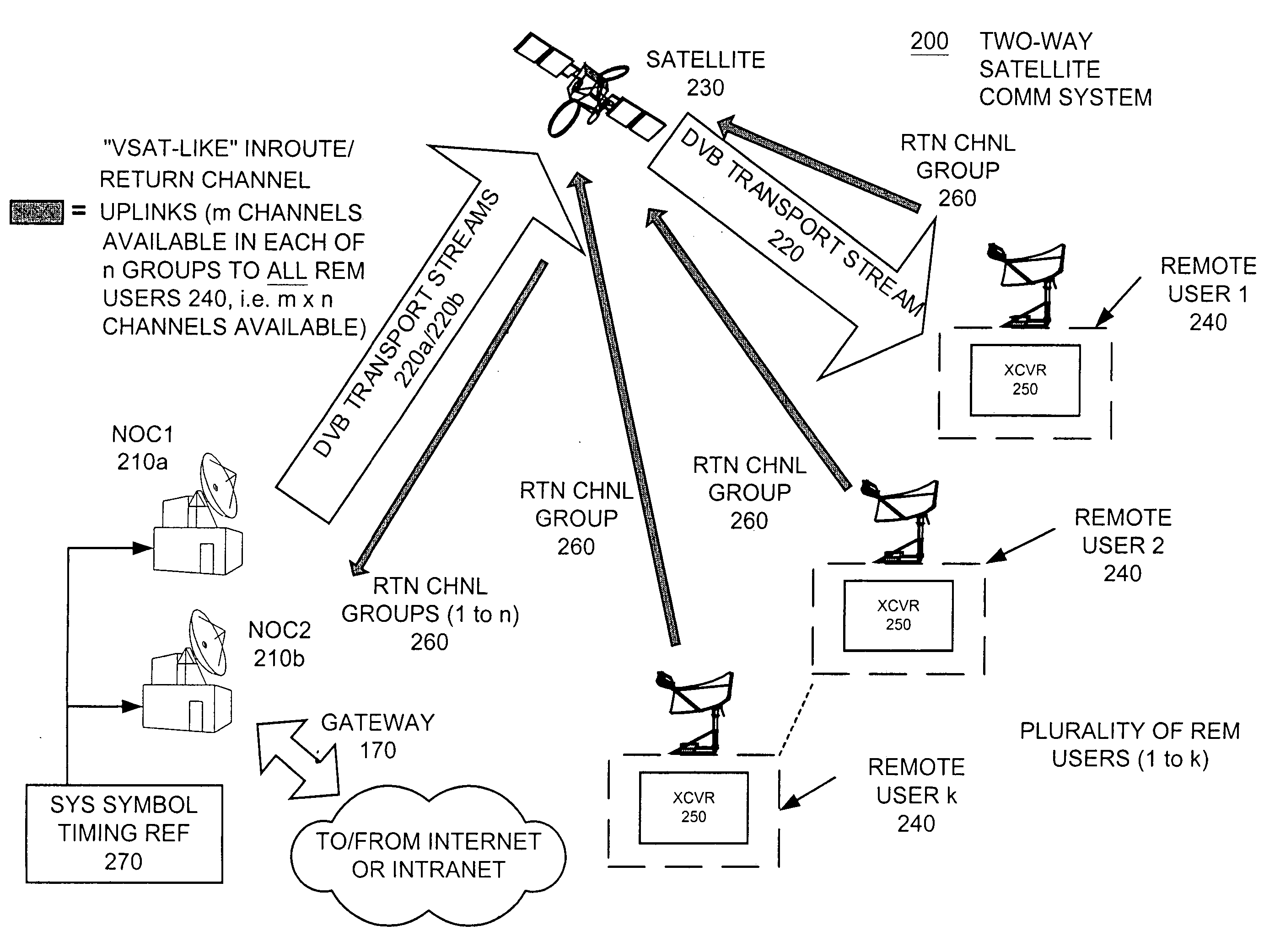Apparatus and method for efficient TDMA bandwidth allocation for TCP/IP satellite-based networks
a satellite network and bandwidth allocation technology, applied in the field of efficient bandwidth allocation of tcp/ip satellite network transmission control protocol/internet protocol (tcp/ip) systems over tdmabased satellite network, can solve the problem that the potential benefits of vsat technology for consumers in the area of broadband delivery are necessarily diminished by the limited bandwidth, and the limited number of inbound channels can experience congestion. problem, to achieve the effect of optimizing the bandwidth allocation scheme and balancing traffi
- Summary
- Abstract
- Description
- Claims
- Application Information
AI Technical Summary
Benefits of technology
Problems solved by technology
Method used
Image
Examples
Embodiment Construction
[0037] A preferred embodiment of the method and system of providing return channel TDMA frequency and bandwidth allocation of the present invention is described below. Although described generally in terms of Hughes Network Systems' Two-Way DirecPC® for ease of discussion, the thrust of the communication bandwidth allocation system, apparatus, and method of the present invention could be embodied in other forms with only slight variations as to the detailed implementation. It also will be obvious to skilled artisans in the relevant art that all features of the invention will not be described or shown in detail for the sake of brevity and clarity.
[0038] The present invention is designed to control allocation of the available bandwidth of groups of return channels that share the same uplink frame timing derived across multiple transport streams. For simplicity, this two-way satellite communication system 200 is characterized in FIG. 2 as including one or more Network Operations Cente...
PUM
 Login to View More
Login to View More Abstract
Description
Claims
Application Information
 Login to View More
Login to View More - R&D
- Intellectual Property
- Life Sciences
- Materials
- Tech Scout
- Unparalleled Data Quality
- Higher Quality Content
- 60% Fewer Hallucinations
Browse by: Latest US Patents, China's latest patents, Technical Efficacy Thesaurus, Application Domain, Technology Topic, Popular Technical Reports.
© 2025 PatSnap. All rights reserved.Legal|Privacy policy|Modern Slavery Act Transparency Statement|Sitemap|About US| Contact US: help@patsnap.com



